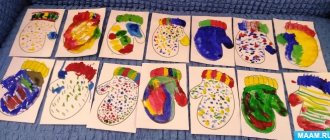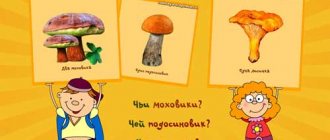Abstract of the educational activity “We are getting acquainted with the street” (lesson in the 2nd junior group)
Abstract of the educational activity “We are getting acquainted with the street”
(lesson in the 2nd junior group)
Target.
Introduce children to the street and its features; reinforce the rules of behavior on the street: you need to be careful, walk only on the sidewalk, on its right side, cross the street only at a specially designated zebra crossing; if you break these rules, you can get hit by a car.
Keywords:
names of parts of the street, transport. Material. Painting “City Street”, workbook.
Progress of the lesson
Children are asked to guess the riddle:
The houses stand in two rows. They look at each other with square eyes. (Street.)
The painting “City Street” is exhibited, children look at
her, a conversation is held on the following questions:
What is the street for? What parts is the street divided into?
What do you call people walking down the street? How should a pedestrian walk down the street?
Where can people cross the roadway? How do you know where the transition is?
Why do we need a zebra crossing and a traffic island?
Children are given a task. Draw a zebra crossing and a traffic island yourself on a piece of paper. Tell us why they are needed.
Offer the children to look at an illustration where a street is drawn; four children are walking along the left sidewalk, holding hands; they are noisily talking to each other, occupying the entire sidewalk. And a pedestrian is walking towards them - an adult man. He is forced to step off the sidewalk onto the roadway, and a car comes towards him.
The teacher asks the children a question: “Do children behave correctly on the sidewalk?” He clarifies with them: several people cannot walk on the sidewalk holding hands. Otherwise, you will take up the entire sidewalk and oncoming people will have to go down onto the roadway, and this is dangerous. A polite person will never jostle on the sidewalk. The sidewalk should be divided - let the left side be for pedestrians moving towards you.
The teacher offers to listen to a poem
They don’t just walk around the city, on the street:
When you don't know the rules, it's easy to get into trouble.
Be attentive at all times and remember in advance:
The driver and the pedestrian have their own rules. Summarize the lesson.
Lesson summary from the “Know Yourself” series in the second junior group
Tasks:
• Clarify and consolidate children's knowledge about the parts and organs of their body, their purpose;
• Develop skills in exploring objects using the appropriate senses;
• Develop speech-auditory attention, visual, auditory, tactile sensations;
• Cultivate a friendly attitude towards each other; caring for yourself.
Didactic.games:
“Say kindly and show”; “Guess who said? "; “What’s ringing? "; “Say a word”; “What did the artist forget to draw? »
Summary of GCD in the junior group “As much as”
Summary of GCD in the junior group “As much as”
Tasks:
-develop an interest in mathematics
,
- mastering the ability to understand sets ( “one”
and
more"
);
-teach children to understand the expression “ as much as”
"
, to reflect in one’s own speech this is a concept denoting the equality of numbers of sets.
Material
:
Chairs, cubes, baskets of different colors, stickers according to the number of children.
Progress of the lesson:
Children today, you and I are going to a country called “ Mathematics”
“
, but first I suggest you play a game
called
“Even Circle”
.
Children, holding hands, walk rhythmically in a circle and say the following words:
In an even circle
One after another
We are going step by step.
Stay where you are!
Together together.
Let's do it like this!
When the words end, they stop and repeat the movement shown by the teacher, for example, turn, bend, sit down.
Then the teacher draws attention to the chairs that are in the group according to the number of children
. Children stand near the teacher.
V.: Children, look how many chairs we have
?
D.: (A lot)
.
V.: You and I need to know - we have so many chairs in our group
,
How many children
?
Or less, or maybe more? Now we will check with you, take one chair each. Place it on the carpet in a semicircle (specially designated area)
. The teacher helps the children place chairs on the carpet.
V.: (calls all the children)
guys, all stand next to me and look
how many chairs we have in our group
?
D.: (A lot)
.
V.: Yes, there are a lot of chairs and a lot of children. We are now finding out if there are enough chairs for children.
V.: Anya will sit on one chair (points with her hand, and the children sit down)
.
Zhenya - on one chair, Sonya - on one chair (the rest are watching and waiting for their turn to sit)
.
V.: (increases the pace, calling the names of the children)
. Sit down on one chair each.
V.: (asks the last child)
: Is there an empty chair next to you?
R.: answers
V.: (the next child, is there an empty chair next to you? Is there an empty chair between Dima and Vanya? No. There is not a single chair left.
Q: How many children?
,
so many chairs
.
Listen: We have so many chairs
,
How many children
.
V.: So, how many chairs do we have?
? Tell me, Leva?
Leva: We have so many
,
How many children
.
(This is exactly the wording
need to be achieved from children).
V.: Let's say together: We have chairs, how many children?
.
I pick up a basket with cubes: “Guys, look, I have a basket, and there are cubes in it.”
Q: How many cubes
?
D.: (A lot)
.
V.: Interesting, there are so many
,
How many children
? Or not. How do we know this?
D.: answer (must take)
.
V.: And since you need to take cubes
to find out
if there are as many cubes
as
there are children
?
D.: (One at a time)
.
V.: Each child takes 1 cube. There should be cubes left in the basket after the last child takes the cube.
Q: Does everyone have a cube? (Yes)
.
Q: Do I have any cubes left in my basket?
D.: answer
V.: So there are more cubes than children. So how many cubes
, in the basket?
D.: (More than children)
.
V.: Yes, there are more cubes than children. (Points to the remaining cubes)
.
Let's check how many cubes are left
?
Children place their blocks on another basket (for example, red)
.
V.: No one has any left, (raises the basket)
.
There are as many
cubes in the red basket as
there are children
.
How many
cubes are in this basket (color blue? I point to the basket with the remaining cubes
D.: (A lot)
.
V.: Take one at a time. Let's find out how many cubes there are
,
How many children
?
(Children come up one at a time)
.
Alyosha, take 1 cube, Tanya calls everyone in turn, the children come up, take 1 cube each and see how the number decreases. The last two children say: “But I didn’t have enough
!
V.: So there weren’t enough cubes for Sonya and Sasha than there were children.
He watches as the children put the cubes away so that no one has any left.
Q: How did we know that there are fewer cubes than children?
D.: (Not enough)
.
Q: How did we know that there are more cubes than children?
D.: (A lot left)
.
IN.:. Why do we have the same amount in our group
,
How many children
?
(Chairs)
.
Q: How should I say it? (There are so many
,
How many children
)
.
Q: Why do we have less than children (Show the blue basket with fewer cubes.)
.
D.: There are fewer cubes in the blue basket than there are children. (Replicas, and there are a lot)
V.: (look at the second red basket)
:
How many cubes are there?
?
There are so many cubes in the red basket
,
How many children
.
Q: Look, children, I also have a yellow basket. Let's see what's in it.
D: Stickers!
Q: This is a gift for all children. I wonder how many of these stickers there are here
? Is there enough for everyone?
Children each take one sticker.
Q: Everyone got it. So how many
?
D: As many as children
!
Q: Well done!
V.: Children, this is where our journey to the land of mathematics ends.
. You did well today, you learned to count.


